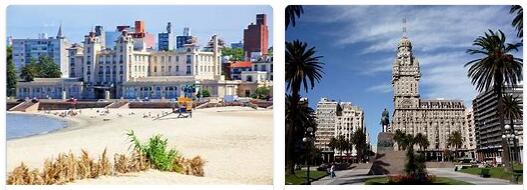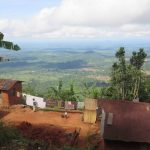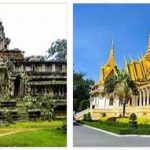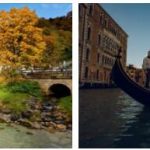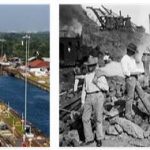Punta del Este
140 km east of Montevideo is the seaside resort of Punta del Este, which is particularly popular with South American tourists. The small town with actually only 30,000 residents then becomes a center of the sophisticated world with fashion shows, sailing regattas and other major sporting events. The landmark of Punta del Este are “Los Dedos” (the fingers), a stone sculpture about five meters wide and three meters high in the shape of a hand that rises out of the sand on one of the beaches. Another major attraction is Casapueblo. It is the home of the famous Uruguayan artist Carlos Páez Vilaró. The extravagant building, entirely in the style of Mediterranean building architecture, was built for 36 years. White outside, no straight wall inside, today it is both a museum and a studio. You also have to visit the port of Punta del Este if you are on holiday there, visit at least once. Strolling there is fun, in the morning the fishermen come with fresh fish, mussels and seafood, which you can also buy there directly. There are several sea lions lying on the pier. The city is known as Uruguay’s St. Tropez for its entertainment strip with dazzling nightclubs and the Las Vegas-style Conrad Casino.
Montevideo
Montevideo is the capital and primate city of Uruguay. It was founded in 1724 on the Río de la Plata on the slopes of the Cerro. The 137 m high mountain gave the city its name “monte video – I see a mountain”. The cultural center is perfect for a relaxing stroll past colonial buildings: the Plaza Independencia, the Solis Theater, the cathedral as well as the government palace and the Palacio Salvo, the first high-rise building in South America with 26 floors. Ciudadela is the only remaining section of the wall that once surrounded the entire city. It now serves as the entrance to Ciudad Vieja, the old town of Montevideo. In Montevideo there are numerous museums, important collections and exhibitions. A visit to the “Museum Andes 1972” should not be missed. The museum pays homage to 16 young athletes who survived two months in the icy snow of the Andes after the Uruguayan Air Force 571 crash on October 13, 1972. It is one of the greatest survival stories of the 20th century. In the museum you can see many exhibits that were vital to the people who were fortunate enough to survive. In addition to some objects, it also shows extensive photographs of the situation in which the survivors of the accident found themselves and which survival strategies a person is capable of. The visitors are particularly enthusiastic about the tour. Visit insidewatch.net for America overview.
Colonia de Sacramento
From Montevideo in the south-east you come through the Uruguayan meadow landscape to the colonial town of Colonia del Sacramento, about 170 km away. The city, declared a World Heritage Site by UNESCO, was the first colonial settlement of Europeans in what is now Uruguay, making it the oldest city in the country. The historic center is well cared for and gives visitors the impression of being in another century. The houses are well preserved and you can still see the typical tiles from the Portuguese colonial times. The colonial city is home to several museums. These are the Spanish Museum, the Portuguese Museum, the Museum of Colonial Tiles (azulejos) with the map of the city of Colonia from 1762 and the Museum of the Aborigines of the Region. Other sights and important buildings are the old city gate, the old bastion (fort) and the old lighthouse. The lighthouse is located at the western end of the historic and colonial old town and offers a good all-round view of Colonia del Sacramento on two different levels.
Cabo Polonio
Cabo Polonio is a small fishing and seaside resort in the Rocha department on the Atlantic coast of Uruguay. The place is located on a peninsula, between the seaside resorts of Valizas and La Pedrera, about 260 km from the capital Montevideo away and 60 kilometers from the northern border with neighboring Brazil. In the area around Cabo Polonio there are more than 4,000 year old traces of settlements of the indigenous people (Charrúas, Yaros, Guanaes, Chanaes). However, the name and the first settlement of the peninsula go back to a shipwreck. It is a very pristine place – there is still no electricity there, the water comes from the well. More and more people come to this place in search of nature and originality that can only rarely be found in the world. Its protected beaches, which are framed by large shifting dunes, are one of the town’s greatest highlights. In the small town of Rincon, a fantastic view over the ocean is just as inspiring as the world’s largest sea lion reserve. Efforts to protect the flora and fauna around Cabo Polonio have a long history. This is how the Arroyo river valley became Valizas and Cabo Polonio became forest reserves as early as 1942, but the area around Cabo Polonio was only declared a national park in 2009.
